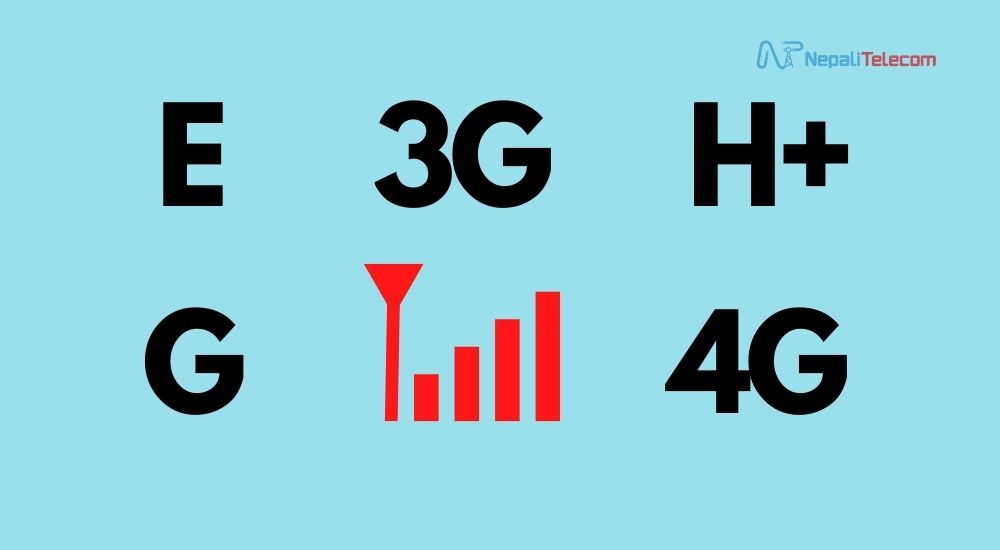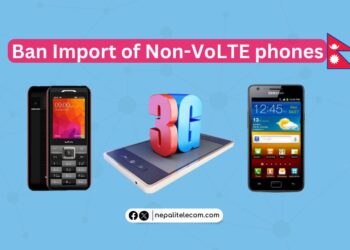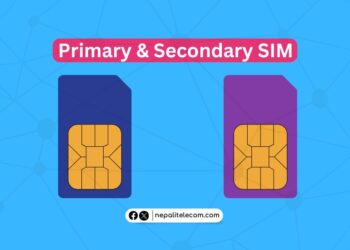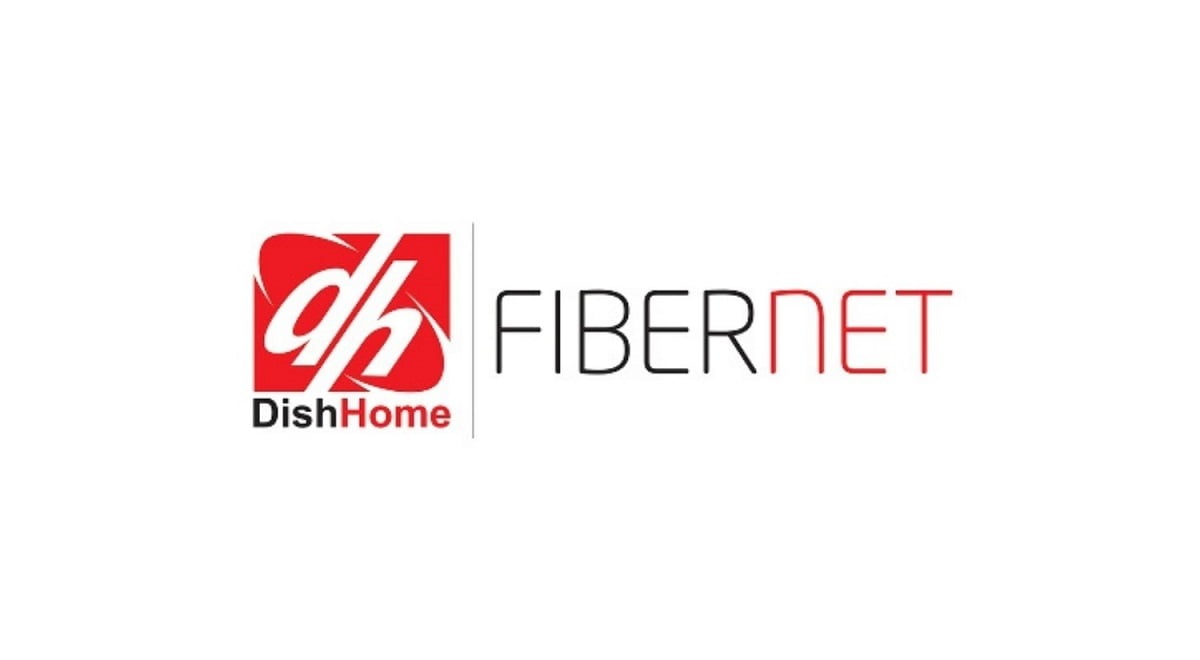Ever wondered what different mobile network signs mean in your mobile phone’s notification panel? You would notice G, E, 3G, or 4G or its variation depending on the location and the network you have activated. With each symbol change, you would either see an improvement or a drop in your mobile internet capacity.
Despite being so obvious, not every mobile phone user has pondered around those letters which signify so much in mobile broadband. Depending on the availability you will see G, E, 3G, H, 4G, etc. and each represents a different variant of mobile network or generation and offers a distinct broadband performance. If you were not familiar with these mobile networks signs, this post is dedicated to you to help you acquaint yourself with each of them and their performance speed.
G (GPRS)
The G sign on your phone means GPRS (General Packet Radio Service) and offers the slowest internet on a mobile network in 2G GSM service. The technology has grown far above and G has become obsolete. The chances are you won’t be able to see this often.
GPRS is the thing for very old handsets and offers minimal data transmission of about 56 to 114kbps. With it, you could only browse the internet for basic news, and texts and never for video calls. Before 3G became widespread, GPRS was still a thing. However, as mobile technology has evolved in leaps and bounds, G’s existence is slim to almost none.
E (Edge)
If you don’t have a 3G or 4G connection available, your mobile network will connect to the ‘E’ symbol. This letter stands for Edge (Enhanced GPRS) suggesting an improved performance over the previous G standard hence called 2.5G.
The Edge still doesn’t offer a huge data speed like today’s internet. However, basic browsing becomes tolerable on it. You could however still watch YouTube videos or download a very small size file if patience is your greatest virtue but forget video or audio calling.
When connected to the E sign, you could get around 300 kbps on a normal basis. In the smartphone age, this will not fly for us as the apps running in the background also contests for bandwidth, E is not an option.
Read: Causes of Mobile/Internet Network Outage And What You Should Do?
3G
G and E signs were for 2G, whereas 3G itself has its own sign whose launch is the beginning of the first stepping stone in mobile broadband. The third-generation mobile standard took its first birth in 1998 in Japan and quickly spread across Europe. In Nepal, NTC gets the credit for launching the high-speed 3G network that offered real mobile broadband for the first time.
3G operates on UMTS (Universal Mobile Telecommunications Service) technology. It can offer around 3.1 Mbps speed which is a marked improvement over the previous 2G generations. With it, video calls became possible for the first time, high-quality audio calls over IMs also spread. Downloading moderately larger files also became possible.
3G met with the impending smartphone era and the growing need for higher bandwidth volume. The high-speed broadband by third-gen network helped uses with browsing Maps, YouTube, video calling, and social media for the first time. Economically and culturally, 3G heralded a real mobile broadband revolution which has continued an upward spiral to date.
In Nepal, state-run NTC gets the credit for the 3G launch. Nepal Telecom (NTC) introduced 3G in 2007 and has the highest customer base on it. With Ncell following the suit, Nepal’s mobile broadband saw a real revolution.
Also check: 2G or 3G? Which Mobile Network Will Shut Down first in Nepal?
H/H+
While 3G offered a reliable connection, technology could only afford to expand as the demand for high speed grew. The H and H+ signs show significant growth over the standard 3G network. You will likely see more of the H or H+ than 3G on your mobile phone. These two are the evolved versions of the same 3G and are also called 3.5G to signify their improved broadband efficiency.
The H represents High-Speed Packet Access (HSPA). Although a part of a 3G fraternity, it offers a maximum data performance of 7.2 Mbps. Meanwhile, H+ stands for Evolved High-Speed Packet Access (HSPA+). This network has different variants with each standard offering better data connectivity over the previous one. Ideally, the latest HSPA+ will offer you a basic 21 Mbps. Be informed though that the real-life speed on H+ would be significantly lesser but not to the extent that you would notice them.
With H/H+ streaming audio and browsing become a comfortable affair. You can watch YouTube on its highest quality without buffering. Downloading large files is not a worry with the ultra mighty H/H+. H+ is the real precursor to the current and widely used 4G standard.
Check out: 3G Vs 4G; Which mobile network to prefer?
If you don’t have a resilient 4G network around, you will see either H or H+ connection on your phone which would still deliver all that you need for mobile broadband.
4G/LTE or LTE-A
Like 3G, 4G itself has its own moniker on the network symbol. Whereas some smartphones show it as LTE or LTE-A.
4G or LTE (Long Term Evolution) is an improved version of UMTS technology and offers a highly reliable mobile broadband experience. The first public launch of 4G took place in Stockholm and Oslo, two affluent European cities. Soon, the next-gen technology followed to other regions and now is the most widely available mobile network worldwide. While 3G brought video calls, to larger file downloads to mobile phones, 4G takes the experience to the next level with the humongous broadband capacity.
4G/LTE is a pure broadband standard. It doesn’t support a native voice call service. For mobile internet, it is a utopia.
Check out: Ntc 4G Coverage Reaches 92% Local Levels, With 85% Sites On-aired
4G has got many variants. If you see 4G, it is the standard version. It offers mostly around 150 Mbps. If you see 4G+ or LTE-Advanced pro, you would get up to around 450 Mbps speed. For its improved broadband capacity, 4G+ is also known as 4.5G in terms of mobile network generations.
5G
Ultimately we come across a 5G sign which is for the 5G network.
5G is the greatest mobile network set to revolutionize the world of mobile communication. The surreal high-speed internet with low ping has struck a major hype around the 5G network in the telecommunications industry around the world.
In terms of speed, the 5G can offer significantly higher bandwidth ate over 4G. Ideally, it could achieve the throughput of 40 Gbps at peak and although the real-life speed would be less, that could also leapfrog 4G by miles.
A full-fledged version of 5G would have applications in health, education, automobile, and large-scale manufacturing industries. For now, Asian giants, South Korea, Singapore Japan are spreading the 5G network.
Meanwhile, China has built the world’s highest number of 5G base stations and subscribers are also soaring with each passing month. Due to the emergence of 4G and 5G, legacy networks are now facing an existential threat. Many states have already discontinued their 2G networks and plan to phase out 3G soon.
Indian telcos have begun their 5G trails and Airtel and Jio have both achieved a milestone 1 Gbps throughput in their test. While Vodafone Idea (Vi) has recorded a peak speed of 3.7 Gbps in a 5G trial. Meanwhile, Nepal’s state-run NTC is gearing up for the 5G Trial.
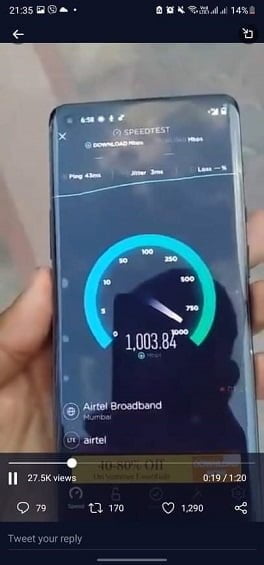
VoLTE
If you are on a call and see the VoLTE sign, then you are using the HD call over the 4G network. VoLTE is the next-gen call service that offers HD audio calling on 4G. The fourth-gen network doesn’t have default support for voice calls.
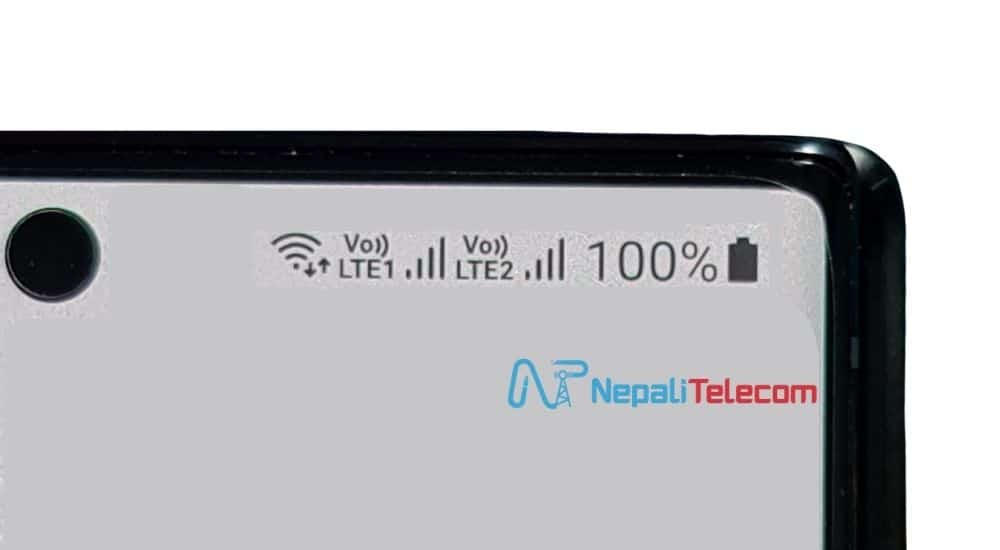
Whenever you dial a number, your mobile network falls back to 3G or lower networks to arrange the call. However, with VoLTE, you can not only make a call while ion 4G, but you can also enjoy surfing the internet simultaneously.
Nepal Telecom has already rolled out VoLTE service while Ncell is planning to launch it soon. Although it is limited to select devices, the telco is coordinating with smartphone makers to roll out the software patch and make this feature available to multiple devices.
Check out: Top features of VoLTE | Native Video calls
Mobile Network Signs and Their Performance
The various mobile network sign represents each generation of mobile network generations or their versions. For a general guide, you can figure out their corresponding download speed with each letter (mobile network).
| Network Signs | Network | Maximum Speed |
| G | 2G | 114 kbps |
| E | 2.5G | 400 Kbps |
| 3G | 3G | 3.1 Mbps |
| H | 3.5G | 7.2 Mbps |
| H+ | 3.5G | 21 Mbps |
| 4G | 4G | 150 Mbps |
| 4G+ | 4.5G | 450 Mbps |
| 5G | 5G | 40 Gbps |
You can see that there is less improvement on internet speed between G and E network which both operates under 2G standard. The bandwidth speed itself is measured in Kbps. The 3G exceeds above them and the measurement of speed is denoted in Mbps. Meanwhile, 4G adds more speed to the regular 3G network. The greatest 5G has dwarfed the capacity of 4G with throughput capacity in Gbps.
Check out: Why do 2G, 3G, 4G Mobile networks coexist? >>
However, the real-life speed of each network depends on a lot of factors. Phone support for the number of antennae, number of users on the network, signal strength, spectrum bandwidth, and other factors can significantly influence the broadband performance you receive.
We hope that this article helped you familiarize yourself with different mobile network symbols what they stand for. If you have more to add to it, feel free to do so. Similarly, you can ask us to include some network symbols in the comment section below and we will try to incorporate it too.


